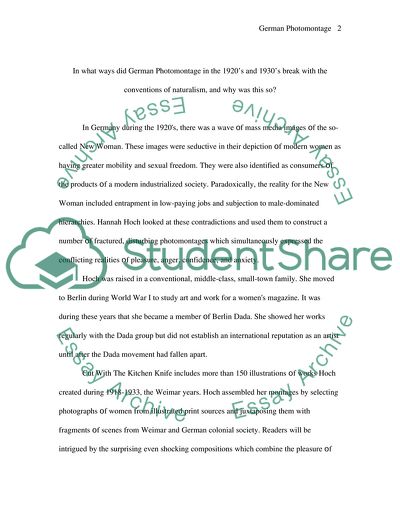Cite this document
(Twentieth Century German Photomontage and Naturalism Assignment, n.d.)
Twentieth Century German Photomontage and Naturalism Assignment. https://studentshare.org/visual-arts-film-studies/1710799-in-what-ways-did-german-photomontage-in-the-1920s-and-1930s-break-with-the-conventions-of-naturalism-and-why-was-this-so
Twentieth Century German Photomontage and Naturalism Assignment. https://studentshare.org/visual-arts-film-studies/1710799-in-what-ways-did-german-photomontage-in-the-1920s-and-1930s-break-with-the-conventions-of-naturalism-and-why-was-this-so
(Twentieth Century German Photomontage and Naturalism Assignment)
Twentieth Century German Photomontage and Naturalism Assignment. https://studentshare.org/visual-arts-film-studies/1710799-in-what-ways-did-german-photomontage-in-the-1920s-and-1930s-break-with-the-conventions-of-naturalism-and-why-was-this-so.
Twentieth Century German Photomontage and Naturalism Assignment. https://studentshare.org/visual-arts-film-studies/1710799-in-what-ways-did-german-photomontage-in-the-1920s-and-1930s-break-with-the-conventions-of-naturalism-and-why-was-this-so.
“Twentieth Century German Photomontage and Naturalism Assignment”. https://studentshare.org/visual-arts-film-studies/1710799-in-what-ways-did-german-photomontage-in-the-1920s-and-1930s-break-with-the-conventions-of-naturalism-and-why-was-this-so.


